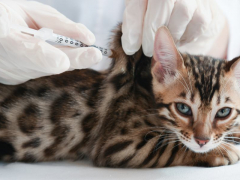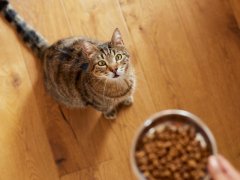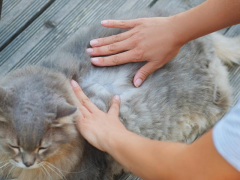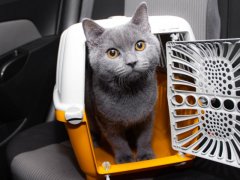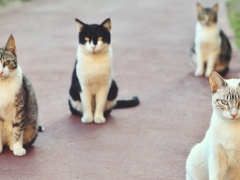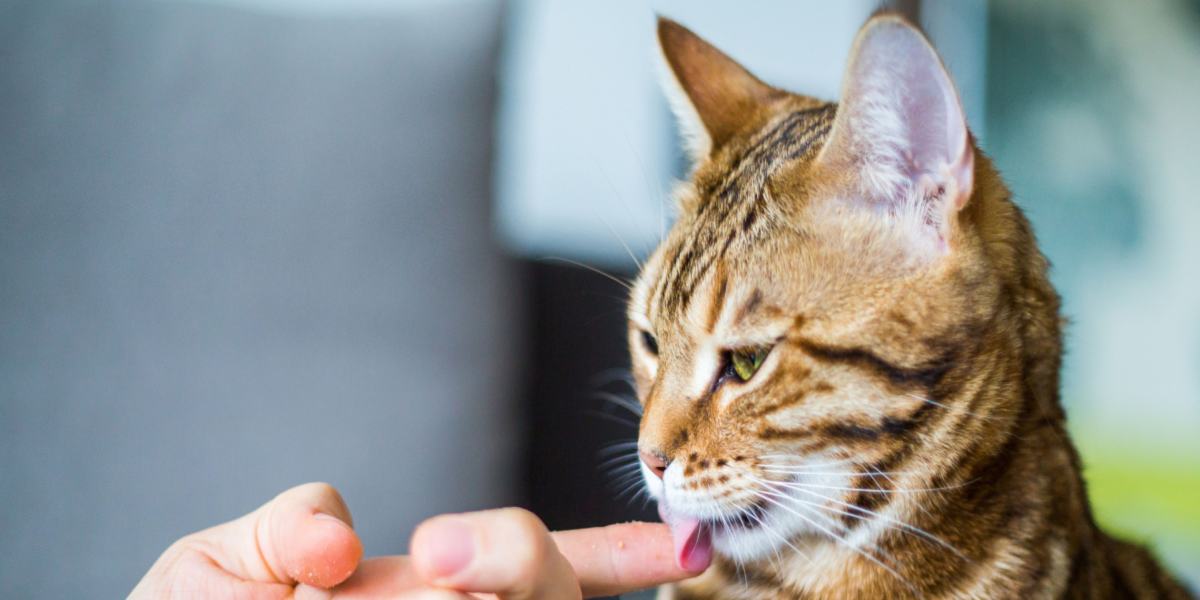
Laxatone is a brand name for a hairball control supplement manufactured by Vetoquinol. In this article you’ll learn what Laxatone is, what it can do for cats, potential side effects, and some frequently asked questions.
Quick Review: Laxatone (White Petrolatum) for Cats

About Laxatone for Cats
Laxatone is a brand name for a supplement containing white petrolatum, light mineral oil, and soybean oil. As its name implies, it is used as a mild laxative, especially to help facilitate the passage of hair through a cat’s digestive tract.
White petrolatum is essentially the same thing as petroleum jelly for which the brand Vaseline is well known. Just like Vaseline, any product containing petrolatum can be used to moisturize and lubricate.
Mineral oil, very closely related to petrolatum, is also used as a lubricant. In veterinary medicine, it is most often used orally to assist with passage of digestive material.
What Does Laxatone Do for Cats?
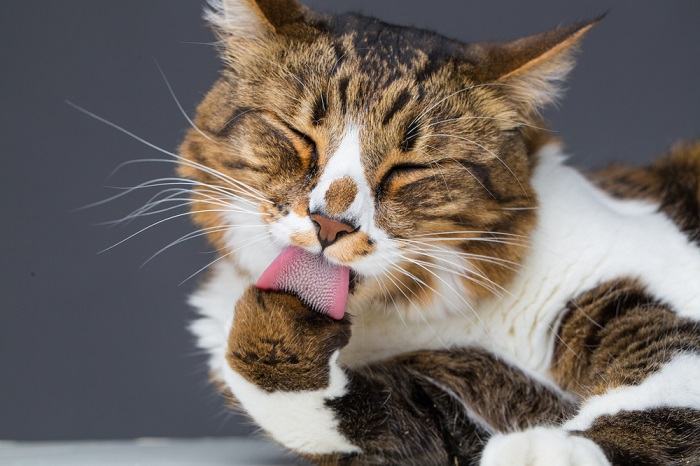
Cats inadvertently swallow hair when they groom themselves, and this can sometimes need help passing through the digestive tract.
Fastidious grooming is a normal part of any kitty’s existence. Their little barbed tongues remove dead hair from their coat and help to exfoliate, or turn over, new skin cells.
Regular grooming behavior is a vital part of normal skin and hair coat health for a cat. Reduced grooming behavior can be a sign of illness and at the least will lead to the development of dandruff and hair matting.
Although very important, regularly licking fur inevitably leads to ingestion of most of it. Cats normally swallow hair, which then passes through their digestive tract and is pooped out.
Sometimes, the hair never really makes it out of the stomach. It collects into a ball in the stomach, which will eventually trigger a spasm for the hairball to be vomited back up. And make no mistake about it—hairballs are vomited up. Although the term “coughing up a hairball” is commonplace, it is fundamentally incorrect in terms of what actually happens.
As a side note, if your kitty appears to be hunkering down with her tongue out to “cough up a hairball,” but nothing comes up, this is actually a sign seen more commonly with inflammatory airway disease or feline asthma, a condition that can go misdiagnosed as a sign of hairballs.
All that ingested hair can also lead to constipation. Since hair is not digestible by cats, wads of hair in the intestinal tract can slow things down quite a bit.
Signs like these may be more common in multi-cat households where lots of co-grooming occurs, and in cats with long hair coats.
When given orally, Laxatone for cats helps to lubricate the hair, allowing it to pass more easily out of the stomach, as well as through the intestinal tract of the digestive system to the colon.
Veterinarians may recommend products like Laxatone for cats to also help with mild or occasional signs of constipation that occur for reasons other than just hair buildup. However, for cats with more advanced or recurrent issues with constipation, Laxatone alone is unlikely to work well on its own and other medical therapies are typically needed.
For cats with recurrent hairballs, cats with longhaired coats, and kitties in multiple cat households, Laxatone may be used regularly to help lubricate digestive contents and help with the prevention of further hairballs.
Side Effects of Laxatone for Cats
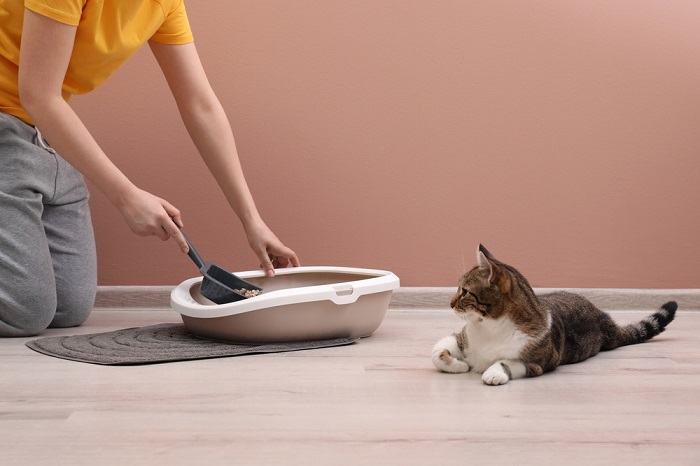
Laxatone helps hair pass through the digestive system until it is ultimately pooped out.
When a small amount of Laxatone is used as directed, side effects of Laxatone for cats are typically minimal. Some laxatives, if given too frequently or in too high a volume, may lead to soft or loose stool. If this occurs, reducing to a small amount or lower frequency of administration should help.
It is important to understand expectations with Laxatone. It is designed as a remedy for mild signs of hairballs or constipation, but it might not result in the elimination of hairballs.
If your cat is having trouble pooping and develops a poor appetite, signs of vomiting, small amounts of liquid stool, or becomes lethargic, these are unlikely related to the Laxatone administration. Signs like these are evidence of a more serious constipation condition that the Laxatone alone is not able to address, requiring a veterinary exam.
Laxatone for Cats Dosage
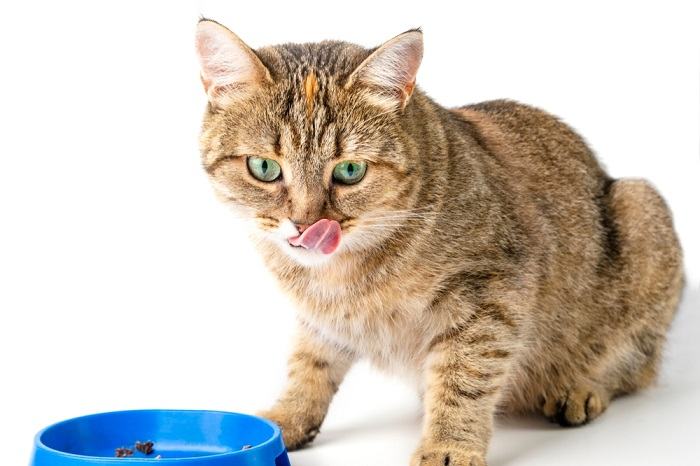
Laxatone is flavored and may be given to a cat directly or mixed into food.
Per the manufacturer, approximately ½ to 1 teaspoon should be given once a daily for two to three days as a bolus dosage. Following this period, ¼ to ½ teaspoon is then given about two to three times per week.
For signs of mild constipation, initial administration of Laxatone can be given once to twice daily. If stool is not produced within one to two days, or if your cat exhibits a decline in appetite and energy level, or develops signs of vomiting, it’s best to schedule a veterinary exam as soon as possible.
Laxatone gel can be administered directly from the tube itself. It has a tasty tuna flavor, and so many cats may be interested in licking it straight up. You can also apply it to your finger or squirt the gel onto your cat’s food.
If administration of the gel in any of these ways is a no-go, you can perform a simple trick with your cat by applying some of the gel to the fur on her front foot. Given a cat’s need to groom anything foreign off, most cats will lick the gel off their foot in an effort to keep the paw clean, consuming the Laxatone gel at the same time.
Forcing the gel directly by mouth will likely be rather difficult as the tube is not designed for direct administration this way, and your cat might become very averse to use of this therapy.
Conclusion
Laxatone and similar products have been a mainstay of home therapy for cats with hairballs and mild signs of constipation. Although Laxatone can help with the passage of hair and can help cats with mild constipation to poop, it should not be considered a lone treatment for chronic, recurrent, or more advanced signs of constipation.
Drug Dosing Disclaimer: We are only able to provide doses for medications that are FDA approved for use in cats and only as the label guidelines dictate. For medications that are used off-label we can only provide guidelines and safety information for use. Safe and appropriate dosing for off-label medications can only be determined by a primary care veterinarian.
We encourage you to work with your veterinarian to determine if a particular medication is appropriate for your cat. Changing or adjusting a dose for your cat on your own without consulting with a veterinarian can carry risk. We do not encourage use of medications prescribed for human use in pets without first consulting with a primary care veterinarian.
